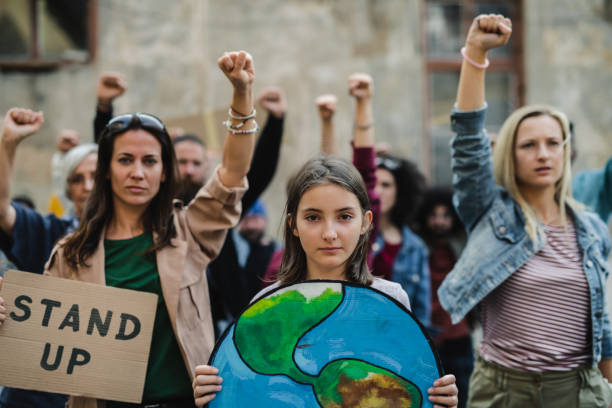OUR WORK
The Ohio Institute for Communities of Color (OICC) is a research and organizing institute working for racial and economic justice for people of color. The institute will work on various significant policy issues, from economy to environmental policy, health care, civic justice, and housing. The problems are interconnected threads in a web of opportunity.
- Ohio ICC acknowledges the impact of historical injustices that include inequities in health, environmental racism, housing, employment, education, and criminal and social/civil justice.
- Ohio ICC advocates for racism as public health crisis statewide and the passing of a health equity policy.
- Ohio ICC holds a vision of equity for all people of color and an antiracism environment
- Ohio ICC Leverages the strengths with the unique capabilities of community-based and grassroots organizations.
- A comprehensive approach of collaborating with diverse groups of people of color in community-based organizations across Ohio to amplify the voices and needs of impacted communities, small businesses of color, essential workers, and community-based nonprofits to ensure that they receive the support.
- Safeguards for people of color by advocating through design and support of public and social policies to open doors to opportunity recognizing the racial wealth gap was deliberate, and it will take conscious race-conscious choices.
- Creating programs, projects, and applying for grants to address injustices with a collection of community stories, investigating discrimination complaints, OhioICC Fellowship program for new and emerging leaders, and using photo voices.
OhioICC’s focus is on designing solutions to various significant policy issues, from economy to environmental policy, health care, civic justice, and housing. The historical information will be used to create program models and prevention strategies. The community’s needs define the social determinists of health that are both the economic and social conditions but are shaped by public policies. Many historical public policies have been known to create long-term residual impacts and can be used to measure prominent social predictors.
HEALTH JUSTICE
Health equity is achieved when every person has the opportunity to “attain his or her full health potential,” and no one is “disadvantaged from achieving this potential because of social position or other socially determined circumstances.” Inequities are created when barriers prevent individuals and communities from accessing these conditions and reaching their full potential. Inequities differ from health disparities, which are differences in health status between people related to social or demographic factors such as race, gender, income, or geographic region. Health disparities are one way to measure our progress toward achieving health equity.
- In recent decades, there has been remarkable growth in scientific research examining the multiple ways in which racism can adversely affect health. This interest has been driven partly by the striking persistence of racial/ethnic inequities in health and the empirical evidence that indicates that socioeconomic factors alone do not account for racial/ethnic inequality in health. Racism is considered a fundamental cause of adverse health outcomes for racial/ethnic health. They provide an overview of the evidence linking the primary domains of racism, structural racism, cultural racism, and individual-level discrimination to mental and physical health outcomes.
- Some existing factors contributing to disparities include racism, discrimination, and trauma. For people of color to be healthy, we must improve the social determinants of health, which affect our lives and our ability to stay healthy. However, people of color are far more likely to live in unhealthy communities, experience high rates of violence, lack access to health care, and suffer from chronic health conditions. Redlining and discrimination prevent people of color from accessing the resources they need to achieve good health. Too often, existing public policies and programs do not adequately address the specific needs of communities of color, and leaders fail to engage with those communities. Without affordable housing, clean air and water, sustainable jobs, quality education, culturally competent health care, and other vital services, communities cannot achieve good health.
- They were working in essential fields. That people working in environmental services, food services, the transportation sector, and home health care cannot work from home. These positions put workers in close contact with others. Due to economic status, these individuals may not have self-protected resources such as masks, gloves, etc.
- Inconsistent access to health care due to lack of insurance or underinsurance. Being able to afford doctors’ visits, co-pays, medications, and equipment to manage the chronic disease is essential to lowering the risk of death from COVID-19 and other conditions. For instance, a patient with poorly controlled diabetes or asthma due to inconsistent treatment is more at risk for severe, even deadly, coronavirus infection.
- People of color have a higher burden of chronic health conditions associated with a poor outcome from COVID-19, including diabetes, cancer, heart disease, and lung disease. In a study cited by the U.S. Centers for Disease Control and Prevention (CDC), about 90% of those hospitalized with severe COVID-19 had at least one of these underlying medical conditions.
- Stress and immunity. Studies have proved that stress has a physiological effect on the body’s ability to defend itself against disease. Income inequality, discrimination, violence, and institutional racism contribute to chronic stress in people of color that can wear down immunity, making them more vulnerable to infectious, mental health challenges, infant and maternal mortality, and chronic disease.
- Hospitals’ community benefit is not the singular solution, but it can be better used as a tool to have a more meaningful impact on health inequity. The health inequities facing communities of color are not surmountable with small grants. The complication of our health care system and the prevalence of barriers creating poor health outcomes require deep, meaningful investments and collaboration between hospitals and the communities they serve.
- Health care disparities research documents the role of implicit bias and lack of cultural competency in adverse healthcare outcomes. Increase accountability of healthcare systems and third-party payers in implementing all National CLAS Standards and Anti-racism education.

ECONOMIC AND RACIAL JUSTICE
Over the years, economic inequality, in particular, has become even more prominent as the rich have become richer and the poor have become poorer. There are various types of economic inequality, most notably measured using the distribution of income and the distribution of wealth.
- The financial industry plays a massive role in our society and must be accountable and responsible to all of America’s communities. This is particularly important for communities of color, which typically have had less access to financial services and asset-building resources.
- Communities of color are disproportionately uninsured or underinsured and have fewer financial resources and employee benefits to weather a public health emergency. Nothing demonstrates this vulnerability more vividly than the dramatic and persistent intergenerational racial wealth gap.
- Structural changes to U.S. economic policies to ensure that the necessary health and economic infrastructure is in place the next time the country faces a pandemic or looming disaster stemming from climate insecurity. Closing the unjust racial wealth gap should be a top priority to ensure more equitable, just, and resilient communities.
ENVIRONMENTAL JUSTICE /RACISM
The environment may be taken to encompass all external factors and conditions that affect people’s lives. The definition may be broad and include social aspects from a health perspective. Still, often it is taken to have a more restricted meaning of the chemical, biological and physical agents that impinge on health. People of color’s neighborhoods (populated primarily by people of color and members of low socioeconomic groups) are burdened with many hazards, including toxic waste facilities, garbage dumps, and other sources of environmental pollution and foul odors that lower the quality of life. All around the globe, members of people of color bear a more significant burden of the health problems that result from higher exposure to waste and pollution. Where no regulations exist or are not enforced for poor workers, or in neighborhoods that are uncomfortably close to toxic materials, unsafe and unhealthy conditions exist.
- The statistics on environmental racism are shocking. Research shows that it pervades all aspects of African Americans’ lives: environmentally unsound housing, schools with asbestos problems, facilities, and playgrounds with lead paint. A twenty-year comparative study led by sociologist Robert Bullard determined “race to be more important than socioeconomic status in predicting the location of the nation’s commercial hazardous waste facilities” (Bullard et al. 2007). His research found, for example, that African American children are five times more likely to have lead poisoning (the leading environmental health threat for children) than their Caucasian counterparts are and that a disproportionate number of people of color reside in areas with hazardous waste facilities (Bullard et al. 2007). Sociologists with the project are examining how environmental racism is addressed in the long-term cleanup of the ecological disasters caused by Hurricane Katrina
- Decades of redlining and discrimination in energy and housing policy have long forced many communities of color to live near polluting facilities like fossil fuel power plants, which have made adults and children sick and shortened our lives. It has also led low-income and environmental justice communities to have less reliable services and less access to energy efficiency and clean energy technologies. Income and wealth gaps have left our communities with less money to cover our basic needs, and too many people are forced to make difficult sacrifices to keep the lights on. Affordable clean energy can help address all of these challenges, but existing programs and policies often fail to target benefits toward the communities that need them the most. This happens partly because of a policy-making structure that does not give communities enough of a voice in the decisions that affect their lives.


EMPLOYMENT JUSTICE
Many working families struggle to make ends meet, and many lack the support to help them achieve their financial goals. The effectiveness of public and private work supports in the context of challenges facing low-income families, such as employment instability, low wages, and the prevalence of jobs with nonstandard work hours and working conditions.
- Racial-ethnic minorities are a far smaller percentage of the labor force than are women (23.1 percent versus 46.6 percent). Their disproportionate representation in specific jobs is, nevertheless, worthy of attention. Women of color- African-African American, Latina, and Asian are over-represented in institutional/essential service work. To increase access to “good” jobs, public policies should focus on educational opportunity, equal employment opportunity, and affirmative action.
- A stable American structure of racially segregated occupations and jobs has repeatedly relegated Black and Latinx people to jobs with low and volatile wages, few benefits, including lack of health insurance, and severe working conditions, which restrict their ability to work from home and take paid time off.
HOUSING JUSTICE
- For centuries, structural racism in the U.S. housing system has contributed to stark and persistent racial disparities in wealth and financial well-being, especially between Black and white households. These differences are so entrenched that if current trends continue, it could take more than 200 years for the average Black family to accumulate the same wealth as its white counterparts. While homeownership and affordable housing are not a panacea for eliminating entrenched racial inequality, lawmakers must make amends for past and present harms by enacting new laws to expand access to prosperity for all Americans.
- People of color, immigrant families, and others have built this county, shaped its culture, and contributed significantly to the economy. At the same time, decades of systemic racism created barriers that blocked homeownership opportunities, jobs, quality education, and health care, and is still in practice today, creating affordable housing challenges, income disparities, distressing educational differences, and health outcomes.

